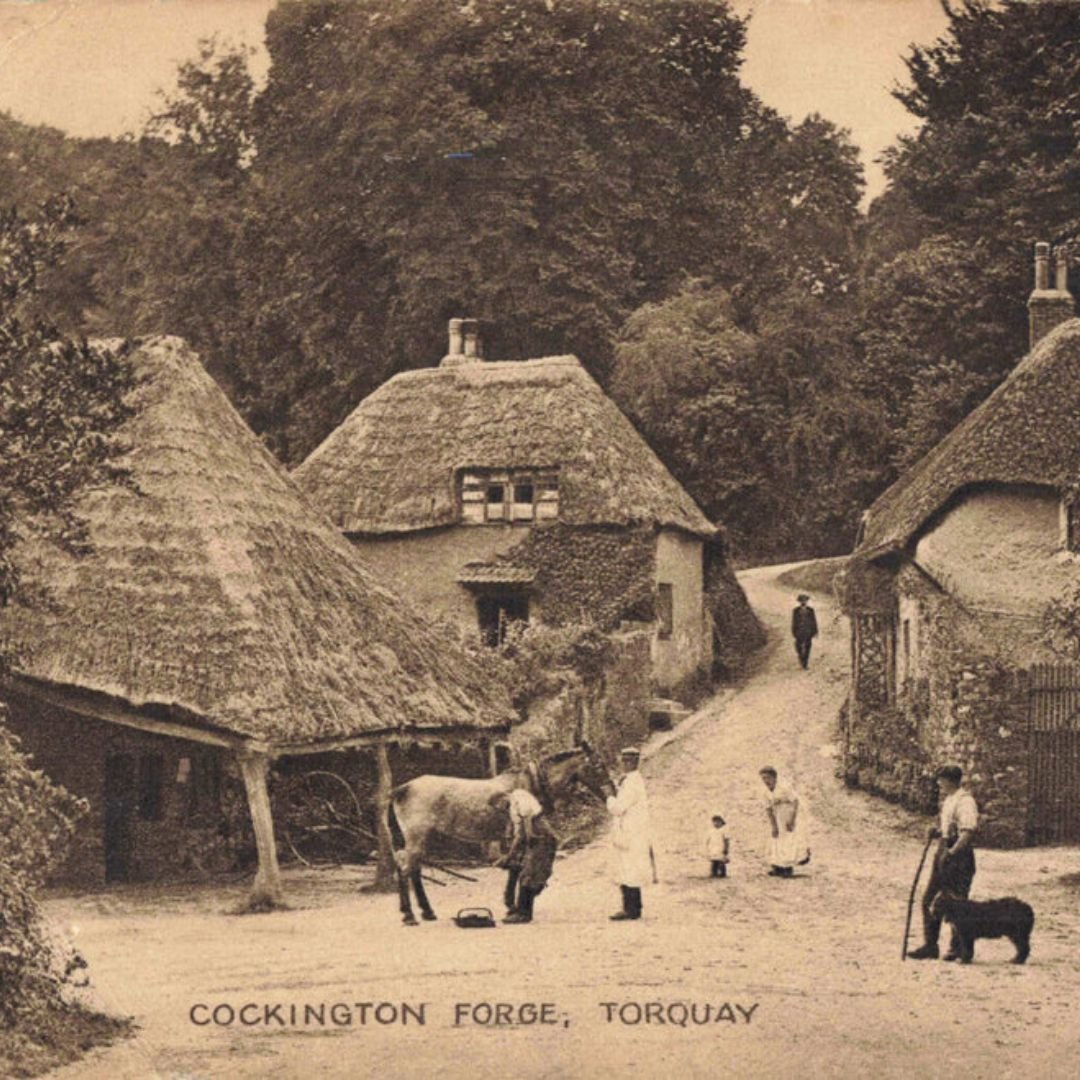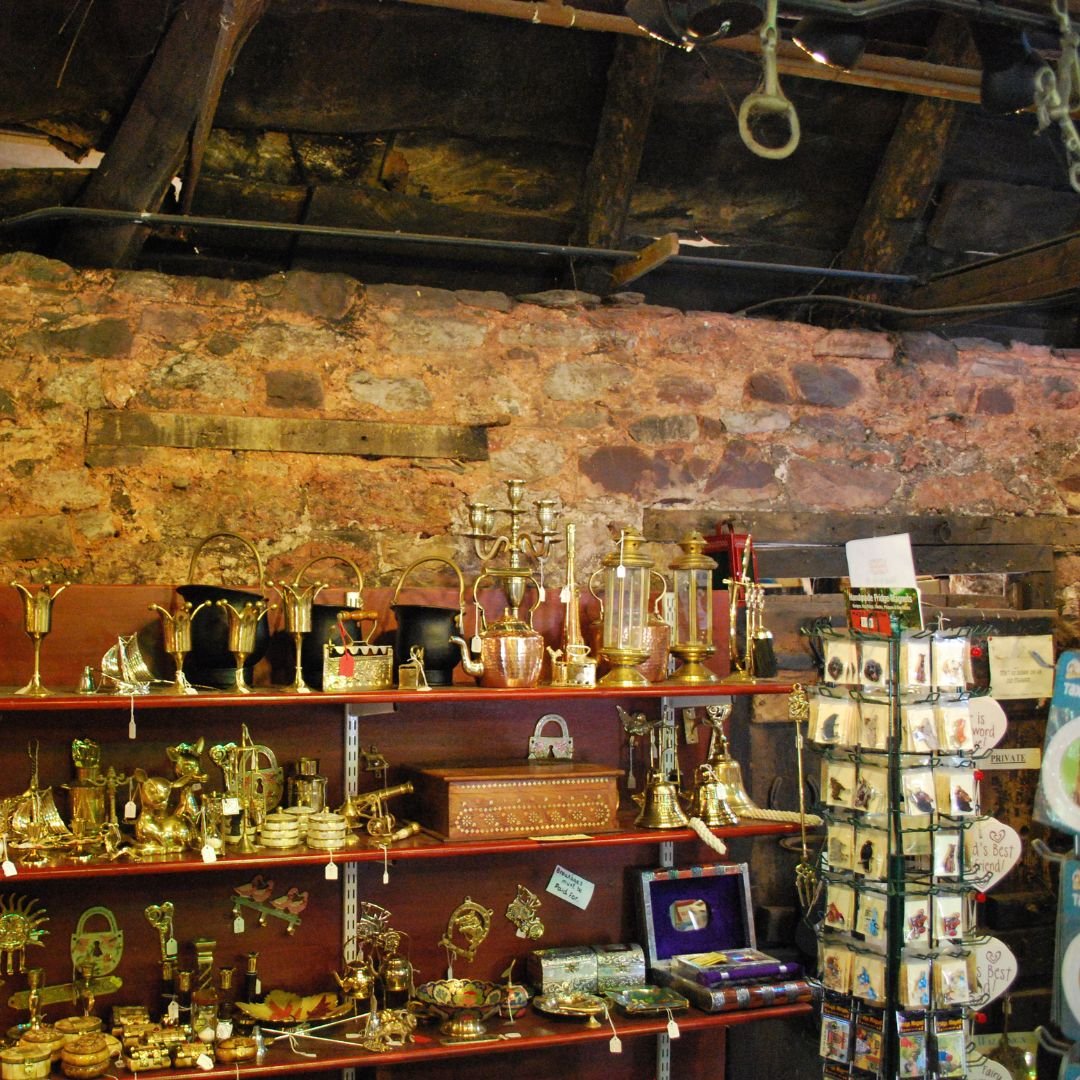Cockington Forge, Torquay: 14th Century Gem
Cockington Forge in Torquay, Devon is a beautiful structure constructed in the 14th century.
Everything about Cockington oozes with history – there’s a water mill, a forge and even the cricket pitch was once a medieval deer park.
One building that particularly catches our eye is The Forge.
This incredible structure has stood at the heart of the village for centuries, and any visitor can see how it's earned its reputation as being one of the most photographed buildings in Britain.
Although often cited as being constructed in the 14th century, a forge had been on the site before that.
In 1345, a fire destroyed large sections of the building, causing it to be re-built in the style you see today, so it was actually re-constructed in the 14th century.
It is thought that Rose Cottage, now a popular tea rooms, was the traditional home of the blacksmith, and was passed on along with the forge.
The first records of the forge's blacksmiths start with a Mr Davey in 1615, whose daughter married his apprentice.
From there, however, it is difficult to track down any other occupants.
We know that the last blacksmith started working at the forge in the late 1940s, and held the position until 1971, when under the economic strain of a steadily decreasing workload, it was forced to close.
Despite its age it is remarkably durable, having survived for centuries with only a few brick and cement fillings to bolster it up.
The other three later walls have had various re-building projects done to them, to such an extent that they look as though they’ve all been built in different styles.
Opposite the cob, the far wall appears to be the second oldest, having been constructed with stones and rough cob-like cement.
Between the stones the wall is a reddish-pink colour, lighter than the cob but coloured this way for the same reason.
Earth used in the construction has been taken from the local Torbay area, where the soil is a deep red colour due to iron compounds in the ground.
It is a striking feature of South Devon, and you might see it in some of the older cottages.
Although no longer producing goods from the furnace for practical and economic reasons, the Forge still manufactures the famous miniature horseshoe, and is open from Easter till Winter.
The historical records, particularly the Domesday Book, indicate that Cockington was established as a Saxon settlement, possibly even predating that era.
Evidence of Celtic presence in the area suggests an even older history, while remnants of neolithic stone tools discovered at Chelston Towers hint at ancient habitation.
The landscape itself, with its sprawling valley extending from the seafront, was evidently conducive to settlement.
The stream flowing through the village, now a gentle trickle, was once navigable by Saxons who could beach their boats and venture further inland.
The fertile ploughland and abundant forests provided ample resources for the settlers, facilitating the establishment of the community.
In the late 800s, Devon was organised into administrative units known as 'Hundreds', with Cockington falling within the jurisdiction of the Hundred of Haytor.
The Domesday Book of 1086 reveals that Cockington Manor was under the ownership of a prosperous Saxon named Alric, who possessed 23 other manors across Devon.
At its zenith, Cockington encompassed a larger area, including Livermead and Chelston.
Alric's fate remains uncertain, but it is plausible that he either perished during the Battle of Hastings in 1066 or defended his lands until his demise.
By the time of the Norman conquest, there likely existed a manor house, chapel, and an extensive estate on the grounds of Cockington.
There are other lovely buildings within the lovely village to explore too.
At the heart of the village is Cockington Court, a 16th century manor house surrounded by hundreds of acres of gorgeous country park.
Cockington Country Park has received the prestigious Keep Britain Tidy, Green Flag Award, an accolade which it has retained 24 times since its launch, one of only 5 sites in the whole of the UK to do so.
The Green Flag Award is given for high environmental standards, being beautifully maintained and having excellent visitor facilities.
Enjoy an idyllic stroll around the beautiful Norman church, the arboretum, the recently restored lakes, Gamekeepers Cottage and the renovated water mill.
Stroll back through the park and cricket green; if you find walking a little taxing, take advantage of the all-terrain mobility tramper for hire in the Visitor Centre to explore the park at your leisure.
It’s heaven in Devon for dog owners with lots of places for your pooch to run and explore!
If you enjoyed this blog post, please follow Exploring GB on Facebook for daily travel content and inspiration.
Don’t forget to check out our latest blog posts below!
Thank you for visiting Exploring GB.




















